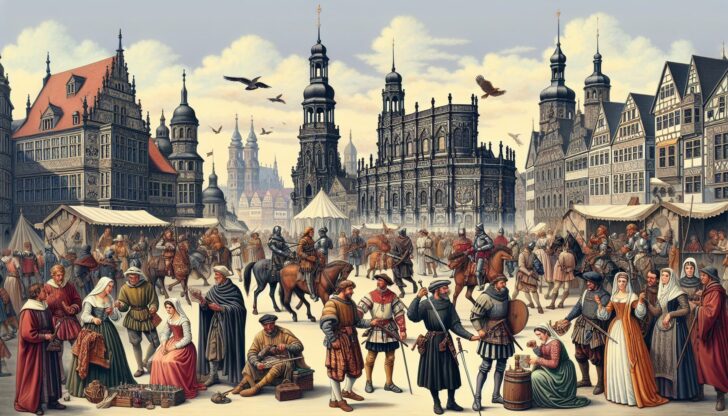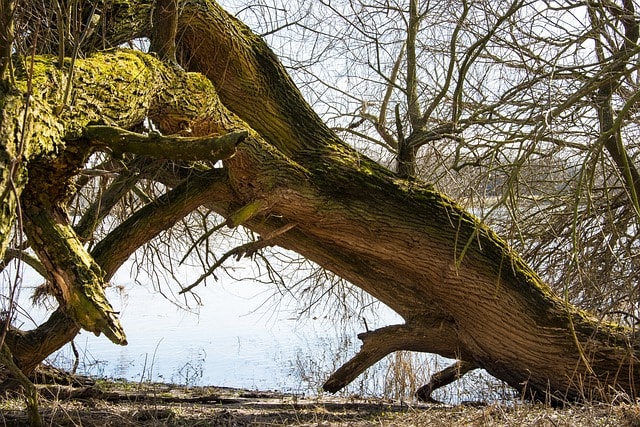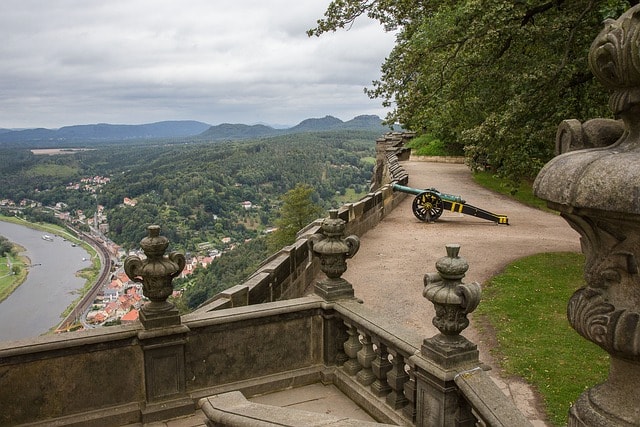Saxony, in eastern Germany, is a region full of history and culture. In this Saxony German article, you’ll find the best attractions, travel tips, and insights into Saxony’s unique geography and major cities.
Table of Contents
Key Takeaways
Saxony’s rich history includes significant milestones such as its origins from a Germanic tribe, its transformative role through the Wettin dynasty, and its impact during World War II and the East German era, highlighting its resilience and strategic importance in Germany.
Geographically diverse, Saxony features the scenic Ore Mountains, the picturesque Elbe River, and weather patterns that support both agricultural activities and winter sports, making it a region of varied landscapes and climates ideal for tourism.
Major cities like Dresden, Leipzig, and Chemnitz are central to Saxony’s cultural and industrial heritage, offering historical attractions, vibrant cultural events, and innovative developments, thus making them key destinations for visitors.
History of Saxony

Saxony’s history is a grand saga that spans over a millennium, including:
Its origins as a Germanic tribe wielding the ‘Sahs’ sword
Its transformation into a powerful state under the Wettin dynasty
Its significant role in both World War II and the East Germany era
This journey through time reveals Saxony’s evolution from a medieval duchy to the modern Free State of Saxony, reflecting the resilience and adaptability of its people through centuries of change and turmoil.
Early Middle Ages
During the early Middle Ages, Saxony was influenced by powers such as Bohemia and Poland. The region’s early history saw significant settlement by the Polabian Slavs, who greatly impacted its cultural and demographic development.
This period laid the foundation for Saxony’s later developments as part of the Holy Roman Empire and its rise to prominence in central Europe.
The Rise of the Free State of Saxony
The rise of the Free State of Saxony began in earnest with the Wettin dynasty acquiring the Saxon electorate in 1425. This era saw Saxony merge with the Margravate of Meissen, becoming a formidable state in the Holy Roman Empire.
However, Saxony’s participation in the Battle of Nations in 1813 led to significant territorial losses, yet this did not diminish its influence and importance in German history.
Impact of World War II
Saxony was profoundly affected by World War II, leading to:
Soviet occupation in the aftermath of the conflict
The Soviet Military Administration holding significant sway over Saxony’s early post-war government
Economic hardships as companies were nationalized
Disruption of traditional connections with other German-speaking regions
The dissolution of the Free State of Saxony in 1952 and its reconstitution in 1990 marked significant chapters in the region’s recovery and reintegration into a unified Germany.
East Germany Era
During the East Germany era, Saxony played a pivotal role in the fall of the GDR regime. The Soviet dismantling of industrial infrastructure and the establishment of Russian military bases in cities like Plauen highlighted the region’s strategic importance in Eastern Germany.
The peaceful demonstrations in cities such as Leipzig, Dresden, and Plauen during the 1980s, inspired by the spirit of Martin Luther, showcased the power of collective nonviolent action, ultimately contributing to the fall of the communist regime and the unification of Germany.
Geography and Climate
Saxony’s geography is a tapestry of diverse landscapes, from the hilly and mountainous areas of the Central Uplands to the flat expanses of the North European Plain in the north. The region is bordered by Brandenburg, Saxony-Anhalt, Thuringia, Bavaria, Poland, and Czechia, making it a crossroads of cultures and influences. Eastern Saxony, in particular, shares its borders with Poland and Czechia, further enriching its cultural tapestry.
With more than half of its land used for agriculture and a quarter forested, Saxony presents a picturesque region with a temperate climate, although the weather can be harsher in its mountainous areas.
Ore Mountains
The Ore Mountains, stretching along the German-Czech border, are a defining feature of Saxony’s landscape. Known for their cultural landscape shaped by extensive mining activities, the Ore Mountains are also a hub for winter sports thanks to their snowy ridges and harsh climate.
Cattle raising on the extensive pastures and the presence of the Ore Mountains/Vogtland Nature Park, the largest of its kind in Northern Germany, add to the region’s picturesque charm and economic significance in Western Germany.
Elbe River

The Elbe River, one of Saxony’s most scenic waterways, flows from southeast to northwest across the region. It plays a significant role in Saxony’s geography, offering scenic views and historic towns along its banks.
Cycling the Elbe Cycle Route provides an opportunity to explore these historic towns and beautiful castles, making it a popular activity for both locals and tourists.
Weather Patterns
Saxony generally experiences a temperate climate, though conditions can become harsher in the mountainous regions. The region is also subject to unique weather phenomena such as Foehn winds and the Bohemian Wind under specific southerly conditions.
These weather patterns add to the region’s diversity, making it suitable for a range of activities from agriculture to winter sports.
Language and Dialects
Saxony is a linguistically rich region, showcasing a blend of Germanic and Slavic influences due to historical settlements. The prominent dialects include Upper Saxon and Lower Silesian, each with unique characteristics that reflect the region’s diverse cultural heritage.
The presence of the Sorbian minority adds another layer of linguistic diversity, making Saxony a fascinating area for linguistic exploration.
Upper Saxon
Primarily spoken in Saxony, southeastern Saxony-Anhalt, and eastern Thuringia, Upper Saxon stands out as a distinct East Central German dialect. It features a unique phonological system, including the unrounding of vowels from Middle High German and the centralization of ‘o’ and ‘u’ vowels. The dialect is also characterized by the ‘softening’ of voiceless stop consonants, which can be perceived as ‘b’, ‘d’, and ‘g’ by speakers of other dialects.
Sorbian Minority
The Sorbian minority in Saxony enjoys special language protections, including bilingual street signs and official recognition. With approximately 20,000 to 25,000 people speaking Upper Sorbian in Saxony, this West Slavic language group is an integral part of the region’s cultural identity.
Cultural centers like Bautzen and Cottbus are notable for their bilingual signs, reflecting the strong presence and preservation of Sorbian heritage.
Major Cities in Saxony
Saxony’s major cities, including Dresden, Leipzig, and Chemnitz, are hubs of historical and cultural significance in mainland European cities. These cities reflect Saxony’s rich industrial heritage and its ongoing contributions to culture and technology. Each city has its unique charm and offers a variety of experiences, from grandiose coffeehouses to cutting-edge technological innovations.
Dresden
Famous for its baroque architecture and cultural collections, Dresden embodies Saxony’s historical grandeur. The city is home to the iconic Semper Opera House, one of the most famous opera houses in the world.
Dresden’s blend of historical and cultural attractions makes it a must-visit destination for anyone exploring Saxony.
Leipzig
Known for its vibrant atmosphere, Leipzig boasts a rich history in:
banking
trade fairs
publishing
classical music
The city’s dynamic culture and historical significance make it a popular destination for visitors. The city is home to the Gewandhaus Orchestra, one of the world’s leading symphony orchestras.
The Leipzig Trade Fair, one of the first mainland european cities to host such an event dating back to the Middle Ages, continues to be a significant cultural and economic event, attracting visitors from around the globe.
Chemnitz
Chemnitz has evolved from an industrial center to a hub of technology and innovation. The city is set to be the European Capital of Culture in 2025, hosting numerous cultural programs and events.
This transition highlights Chemnitz’s ability to adapt and reinvent itself, making it an exciting destination for visitors interested in both history and modern developments.
Traditional Saxon Cuisine
Hearty dishes based on meats, potatoes, and regional vegetables characterize traditional Saxon cuisine. Specialties like Sauerbraten and potato soup reflect the region’s culinary heritage, offering a taste of Saxony’s rich gastronomic traditions. Accompanied by a variety of sauces and unique baked goods, Saxon cuisine is a delightful experience for food enthusiasts.
Sauerbraten
The marinated meat dish, Sauerbraten, encapsulates traditional Saxon cuisine. The meat is typically marinated for several days in a mixture of vinegar, water, and spices like onions, cloves, and bay leaves. This process infuses the meat with a rich, tangy flavor, making Sauerbraten a beloved dish in Saxony.
Potato Soup
Potato soup is a comforting and nutritious staple in Saxon cuisine. Made with simple ingredients like:
potatoes
leeks
carrots
celery
The soup is thickened to a creamy consistency and often includes bacon or sausage for added flavor.
This dish is deeply rooted in Saxony’s culinary traditions, offering warmth and sustenance, especially during the colder months.
Top Attractions in Saxony

As a fascinating destination for travelers, Saxony is celebrated for its mix of cultural and natural attractions. From historic cities and palaces to scenic national parks, Saxony offers a wealth of experiences that highlight its rich heritage and stunning landscapes.
Königstein Fortress
As a marvel of military architecture, Königstein Fortress is among the largest hilltop fortifications in Europe. Covering a 9.5-hectare rock plateau, the fortress boasts over 50 historic buildings, some dating back more than 400 years.
This site offers a glimpse into the region’s military and civilian history, making it a must-visit attraction in Saxony.
Saxon Switzerland National Park
Saxon Switzerland National Park is a picturesque haven for nature enthusiasts. Located along the Elbe River, this park is famed for its unique rock formations, extensive hiking trails, and diverse landscapes, including table mountains, cliff tops, and rock needles. The park’s rugged scenery, shaped by erosion during the Cretaceous period, offers a unique micro-climate and is home to rare animal and plant species.
Hiking in the Elbe Sandstone Mountains provides enchanting views and an opportunity to explore the area’s rich flora and fauna.
Muskau Park
Muskau Park, a UNESCO World Heritage Site, is renowned for its English-style landscape design. Created by Prince Hermann von Pückler-Muskau, the park features a picturesque mix of gardens, lakes, and architectural elements.
This beautifully designed cultural landscape offers visitors a tranquil environment to enjoy leisurely walks and admire the harmonious blend of nature and architecture.
Festivals and Events
Reflecting its rich artistic heritage, Saxony hosts a variety of cultural festivals and events. From the globally renowned Wave-Gotik-Treffen in Leipzig to the vibrant Leipzig Book Fair and the jazz-filled Dixieland Festival in Dresden, there is always something happening in this dynamic region.
These events not only celebrate Saxony’s cultural diversity but also attract visitors from around the world, making it a vibrant holiday destination.
Bachfest Leipzig
The Bachfest Leipzig is a testament to Saxony’s deep-rooted musical heritage. Centered around the works of Johann Sebastian Bach, the festival features concerts, recitals, and educational events. Performances by renowned international artists and ensembles take place in historic venues like St Thomas’s Church and St Nicholas’s Church, creating a unique and atmospheric experience.
The festival also includes open-air concerts on Market Square, adding to its charm.
Dresden Music Festival
The Dresden Music Festival is a celebration of musical diversity, showcasing genres from classical to jazz and world music. The festival features performances by both established and emerging artists, offering a rich blend of classical and contemporary sounds. Notable international artists such as violinist Leonidas Kavakos, cellist Yo-Yo Ma, and pianist Emanuel Ax have graced its stages, making it a highlight of Saxony’s cultural calendar.
Learn more, visit The 11 most beautiful sights in Saxony
Travel Tips for Visiting Saxony
Traveling to Saxony offers a mix of cultural history, scenic beauty, and traditional handicrafts. The region is well-connected via international airports in Dresden and Leipzig, with additional options in Berlin and Prague.
Saxony provides accessible travel options and a variety of activities, making it an ideal destination for family holidays.
Best Time to Visit
Spring (April to June) and autumn (September to October) offer the most pleasant weather and fewer crowds, making them the best times to visit Saxony.
For winter sports enthusiasts, January offers numerous opportunities with ski runs, cross-country skiing trails, and ice-skating rinks in the Ore Mountains.
Getting Around
With long-distance trains from major cities such as Frankfurt, Munich, and Berlin, and international connections between Berlin, Dresden, Prague, and Vienna, Saxony is easily reachable. Within Saxony, a comprehensive network of local trains connects major cities like Dresden, Leipzig, and Chemnitz with smaller destinations. Robust public transportation networks in the big cities, including trams and buses, make getting around convenient and efficient.
Long-distance coach services also provide regular routes to key destinations within Saxony.
Summary
Saxony is a region where history, culture, and natural beauty converge to create an unforgettable travel experience. From its rich historical heritage and diverse linguistic landscape to its vibrant cities and traditional cuisine, Saxony offers something for every traveler. Whether exploring the majestic Königstein Fortress, hiking in Saxon Switzerland National Park, or enjoying the cultural festivals, Saxony is a destination that promises to captivate and inspire. Embark on a journey to this enchanting region and discover the myriad of experiences it has to offer.
Frequently Asked Questions
What is the best time to visit Saxony?
The best time to visit Saxony is during the spring (April to June) and autumn (September to October) for pleasant weather and fewer crowds. Additionally, January is ideal for winter sports enthusiasts.
What are some must-visit attractions in Saxony?
When visiting Saxony, don’t miss the must-visit attractions such as Königstein Fortress, Saxon Switzerland National Park, and Muskau Park, as well as the historical and cultural experiences offered by cities like Dresden, Leipzig, and Chemnitz.
What are some traditional dishes in Saxon cuisine?
Some traditional dishes in Saxon cuisine are Sauerbraten, a marinated meat dish, and potato soup, a hearty and comforting staple. Saxon cuisine is known for its hearty meals based on meats, potatoes, and regional vegetables.
How can I get around Saxony?
You can get around Saxony using the well-connected long-distance trains from major cities like Frankfurt, Munich, and Berlin and a comprehensive network of local trains, trams, and buses within Saxony. Long-distance coach services also provide regular routes to key destinations.
What languages are spoken in Saxony?
In Saxony, Upper Saxon is a prominent dialect and the Sorbian minority has protected language rights, with bilingual street signs and official recognition. The region is linguistically diverse and exhibits a strong cultural identity through its languages.









